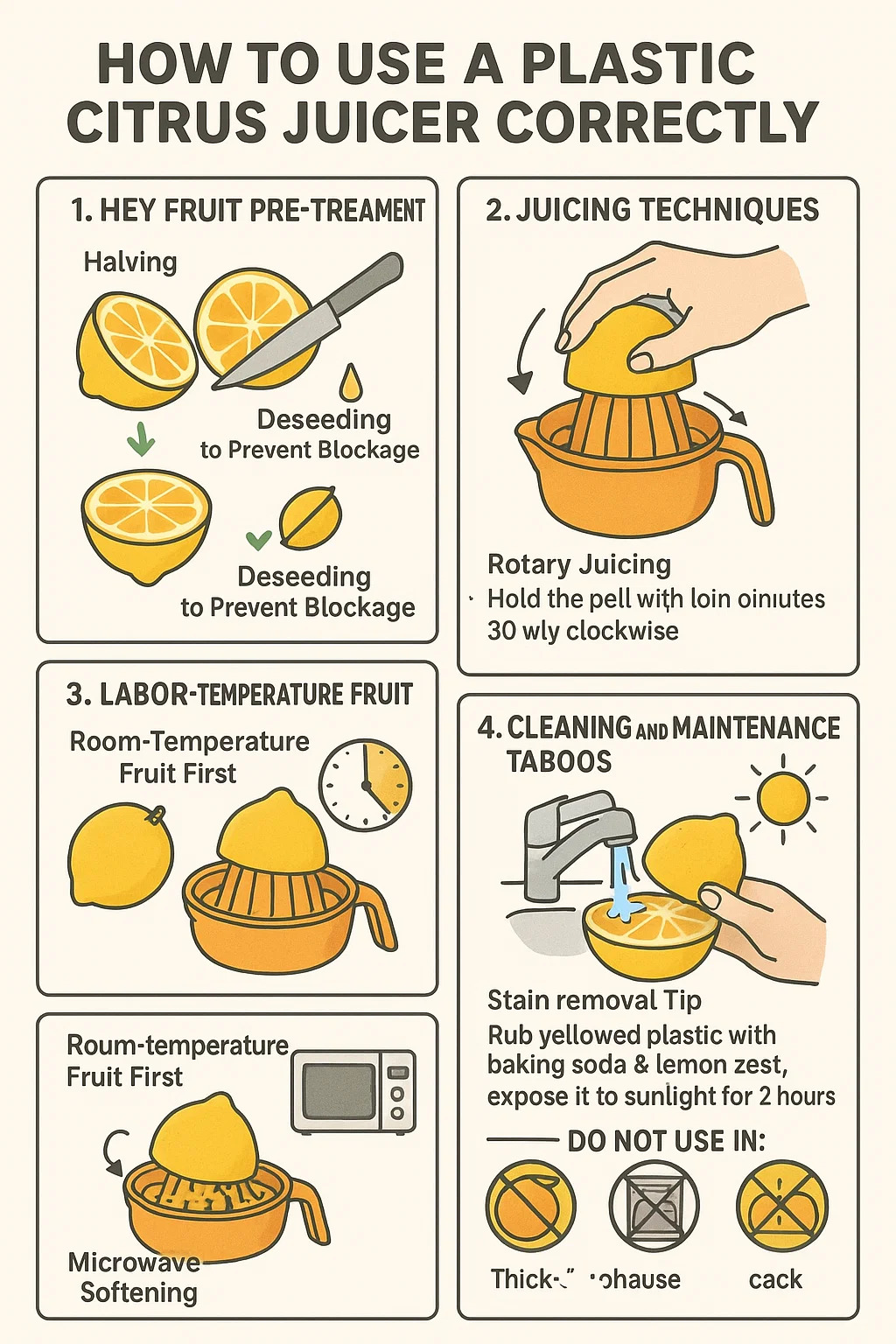How to Use a Plastic Citrus Juicer Correctly
Content
1. Key Fruit Pre-treatment
Halving: Cut lemons/oranges horizontally (perpendicular to the stem and navel) to maximize the exposed flesh and avoid uneven juicing.
Deseeding to Prevent Blockage: Use the tip of the knife to remove any visible seeds beforehand, as they can clog the juicer when squeezed.
2. Juicing Techniques
Positioning with the Ribs: Position the cut surface of the fruit against the ridges of the juicer (aligning the core with the highest point) to ensure concentrated force.
Rotary Juicing: Hold the peel with your palm and rotate it slowly clockwise two times (approximately 180°). Scrape the flesh along the ridges. Avoid pressing hard (the plastic can crack).
3. Labor-Saving Tips
Room-Temperature Fruit First: Refrigerated fruit can be hard and difficult to squeeze; let it sit at room temperature for 30 minutes before proceeding.
Microwave Softening: Microwave stubborn fruit (such as chilled grapefruit) for 10 seconds to soften the flesh and enhance juicing.
4. Cleaning and Maintenance Taboos
Rinse immediately to prevent staining: Rinse immediately with cold water after squeezing (hot water accelerates the penetration of the fruit oil into the plastic, causing it to yellow).
Stain Removal Tip: Rub yellowed plastic with baking soda and lemon zest, then expose to sunlight for 2 hours to remove discoloration.
Do not use in: Thick-skinned pomelo/pomelo (insufficient pressure) Dishwasher (high temperature deformation) Continued use after being broken (bacteria can harbour in cracks)



 英语
英语 中文简体
中文简体














